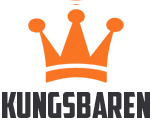Content
- Types of Cloud Computing & Cloud Computing Services
- Do You Want to Send Your Career Into the Clouds?
- What Are the Advantages and Disadvantages of Fog Computing?
- A guide to Agility in cloud computing
- Everything About Cloud Computing
- What is cloud computing?
- Disadvantages of using Community cloud are:
Simplified, that means IaaS provides a virtual server that the customer rents from another company that has a data center. IaaS promotes access versus ownership and gives the end user flexibility when it comes to hosting custom-built apps while also providing a general data center for storage. There are three main types of cloud computing include Infrastructure as a Service, Platform as a Service, and Software as a Service.
Essentially, PaaS providers manage everything else related to the application lifecycle while allowing developers to focus on applications they are developing. PaaS is particularly useful for organizations that want to streamline workflows in a production environment that has multiple developers. Cloud provider, businesses avoid the need to purchase expensive infrastructure, substantially reducing their expenditure. Cloud providers work on the pay-as-you-go model, which means businesses only pay for the services they use, further reducing costs. Though the private cloud is more expensive than the public cloud, it is suitable for larger businesses seeking a higher safety, security, and privacy level. It allows customization in the storage, computing, and networking areas according to the organisation’s IT requirements.
Types of Cloud Computing & Cloud Computing Services
For example, an accounting department could have its own dedicated cloud within the organization’s private cloud. IFogSim is also an open-source fog computing simulator that can evaluate the performance of different fog computing architectures. IFogSim includes a library of modules that can simulate various aspects of fog computing, such as network topologies, device types, and application characteristics. Device-level fog computing runs on devices such as sensors, switches, routers, and other low-powered hardware.
- Businesses will leverage cloud computing alongside 3D printing to deliver customized goods on demand.
- It allows the IT team to quickly allocate and deliver on-demand IT resources.
- Before the cloud became a viable alternative, companies were required to purchase, construct, and maintain costly information management technology and infrastructure.
- Cloud computing offers almost unlimited resources to process large volumes of data to speed research and reduce time to insights.
- ”There are some real Achilles’ heels in the cloud infrastructure that are making big holes for the bad guys to get into”.
If, after reading about how popular cloud computing is and will continue to be, you’re asking, “How can I get in on this amazing field? The Post Graduate Program in Cloud Computing, developed in collaboration with CalTech CTME, will help you become an expert in AWS, Azure, and Google Cloud. Let’s tackle a few of the Frequently Asked Questions about cloud computing. The cloud computing market has been rapidly growing, thanks in part to the pandemic.
By switching traffic as they saw fit to balance server use, they could use overall network bandwidth more effectively. They began to use the cloud symbol to denote the demarcation point between what the provider was responsible for and what users were responsible for. Cloud computing extended this boundary to cover all servers as well as the network infrastructure. As computers became more diffused, scientists and technologists explored ways to make large-scale computing power available to more users through time-sharing. They experimented with algorithms to optimize the infrastructure, platform, and applications, to prioritize tasks to be executed by CPUs, and to increase efficiency for end users. In the public cloud, customers lease shared infrastructure from their cloud services provider.
Do You Want to Send Your Career Into the Clouds?
In your personal life, you probably use cloud computing without even realizing it. Instead of storing hard copies of movies and music in cupboards or on shelves, you now access them virtually through cloud-based streaming services like Netflix and Spotify. Social networks like Facebook and Twitter store those remotely in the cloud, too. From corporations to universities, organizations can host private clouds (also known as corporate clouds, internal clouds, and on-premise clouds) for their exclusive use. When they do, they own the cloud’s underlying infrastructure and host it either onsite or at a remote location.
Infrastructure scalability may be limited in case the cloud data center is restricted to on-premise computing resources. Government and regulatory compliance are simpler, as the private cloud model features custom-made security. A vital part of cloud evolution is the decentralization of remote hosting cloud business solutions and processing through edge infrastructure. While cloud was already an area of focus for cybersecurity providers , the edge is the next frontier. The public cloud has the fewest barriers to entry and is the most accessible for small businesses, startups, and independent professionals alike.
What Are the Advantages and Disadvantages of Fog Computing?
Rather than spending valuable time and money looking after and maintaining IT resources, cloud agility gives importance to security, monitoring, and analysis. The issue of carrying out investigations where the cloud storage devices cannot be physically accessed has generated a number of changes to the way that digital evidence is located and collected. Availability improves with the use of multiple redundant sites, which makes well-designed cloud computing suitable for business continuity and disaster recovery. Productivity may be increased when multiple users can work on the same data simultaneously, rather than waiting for it to be saved and emailed. Time may be saved as information does not need to be re-entered when fields are matched, nor do users need to install application software upgrades to their computer.
Popular examples of the IaaS system include IBM Cloud and Microsoft Azure. Indeed, Salesforce was the first large-scale example of cloud computing. With traditional software, companies had to buy many licenses and install physical copies on every employee’s computer. With Salesforce, they could access the application on-demand over the internet and use it to grow their business — whether they were a small startup or a major corporation. This groundbreaking new approach to software was easy, effective, and affordable, and it set the stage for cloud computing as we know it today. This approach works best for organizations that have their own operating systems, but want tools to support those systems over time.
A guide to Agility in cloud computing
Technological developments in the 1970s and 1980s used early versions of the cloud, for example. And by the early 1990s, the internet already appeared as a cloud in patent diagrams. Software programs typically perform specific functions, are intuitive to use, and often come with generous customer support. For example, with the Salesforce Customer 360 suite of customer relationship management tools, users can customize apps to meet their needs without coding or programming. A multicloud exists when organizations leverage many clouds from several providers.
With all of the speed, efficiencies, and innovations that come with cloud computing, there are, naturally, risks. Wearable technology and the Internet of Things will continue to explode. What started with cloud-connected fitness trackers, thermostats, and security systems will evolve toward next-generation sensors in clothing, homes, and communities. Low-code and no-code platforms will continue to democratize technology.
Cloud SQL Relational database service for MySQL, PostgreSQL and SQL Server. Software as a Service Build better SaaS products, scale efficiently, and grow your business. Marketing Analytics Solutions for collecting, analyzing, and activating customer data. Software Supply Chain Security Solution for improving end-to-end software supply chain security. Web App and API Protection Threat and fraud protection for your web applications and APIs. Productivity and Collaboration Change the way teams work with solutions designed for humans and built for impact.
Everything About Cloud Computing
Google Cloud Deploy Fully managed continuous delivery to Google Kubernetes Engine and Cloud Run. Cloud Code IDE support to write, run, and debug Kubernetes applications. Kubernetes Applications Containerized apps with prebuilt deployment and unified billing.
What is cloud computing?
IaaS gives you the highest level of flexibility and management control over your IT resources. It is most similar to the existing IT resources with which many IT departments and developers are familiar. But whatever definition you use, it is safe to say that any type of cloud system gets classified as a hybrid when applications can move between different yet connected environments. Some of the environments must be derived from scalable, consolidated IT resources. Furthermore, all the environments must be managed through a single environment via an integrated management and orchestration platform.
Fog computing is a form of distributed computing that brings computation and data storage closer to the network edge, where many IoT devices are located. By doing this, fog computing reduces the reliance on the cloud for these resource-intensive tasks, improving performance and reducing latency . Security has always been a big concern with the cloud especially when it comes to sensitive medical records and financial information.
What are the Types of Cloud Computing and Cloud Services
Companies are increasingly adopting cloud computing in order to take advantage of the benefits that it provides compared to traditional on-premises data centers. Cloud customers can choose between a variety of different cloud types and service models, all with their own advantages and disadvantages. Infrastructure as a Service offers basic components, giving access to virtualized servers or storage so that end users can build systems from the ground up.
There are various types of clouds, each of which is different from the other. Public clouds provide their services on servers and storage on the Internet. These are operated by third-party companies, who handle and control all the hardware, software, and the general infrastructure. Clients access services through accounts that can be accessed by just about anyone. Platform as a service provides the building blocks for software creation.
Each type of cloud service, and deployment method, provides you with different levels of control, flexibility, and management. Your organization might also use cloud-powered customer relationship management software, which makes it easy to personalize communications with customers, manage leads, and fine-tune marketing efforts across departments. Or, it might use cloud-powered solutions for human resources, payroll, accounting, and logistics. In these and countless other business use cases, cloud computing can facilitate enhanced security and streamlined data entry, not to mention time-saving automation.



